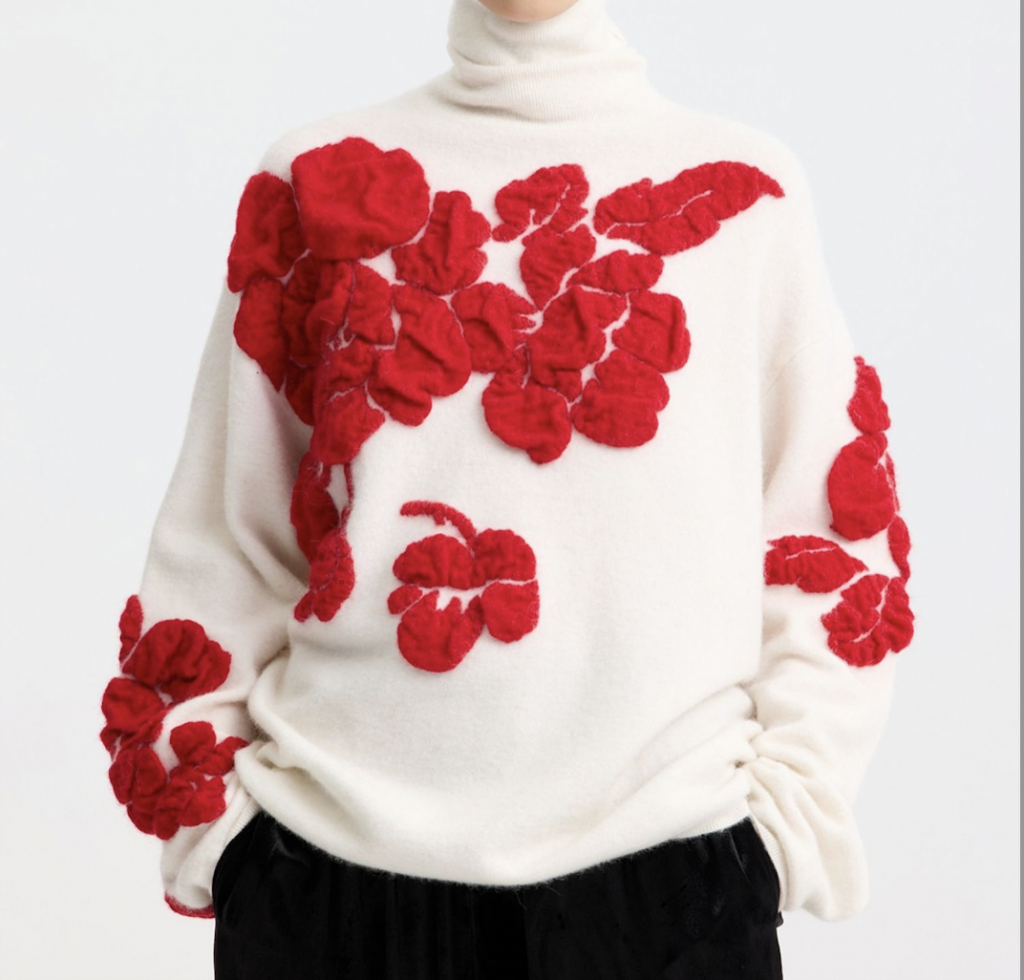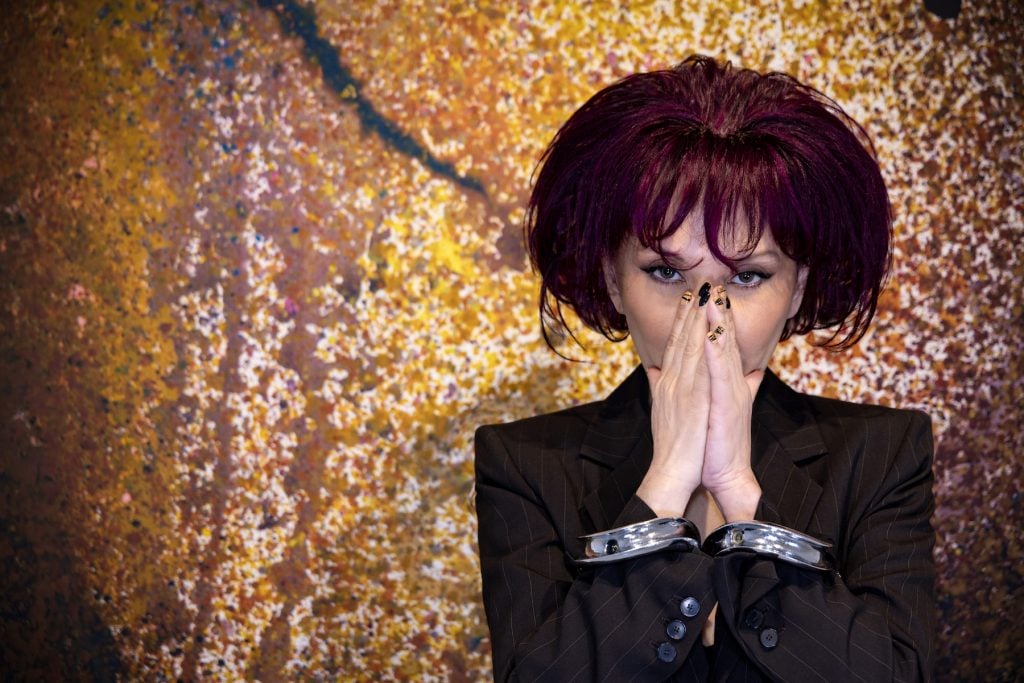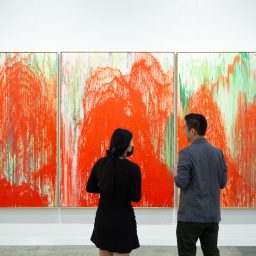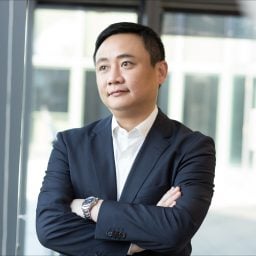Pearl Lam is a gallerist, collector, patron, and curator with over 20 years of experience being at the forefront of reimagining China’s cultural place in the world. Lam is a leading authority on Asian art, design and the international contemporary art market with a network spanning China, U.K., and USA. Lam’s long-term commitment to art and design is rooted in her mission to develop and promote cultural exchange between East Asia and the world, while also presenting Asia’s contributions to both traditions to a global audience.
Economy and art go hand in hand. Over the last 100 years, the growth of the global economy was in the West. Similarly, one cannot deny that Western contemporary art in the 20th century has been a very important, powerful, influence on global art. After China opened up in the 1980s, the country, including its artists, looked to the West to emulate its economic and creative success. Today, China is looking into its own culture instead and as a result, producing gifted artists and remarkable art.
One pandemic later and after years of lockdown and uncertainty, the first international edition of Art Basel Hong Kong in three years is in full swing. The contemporary East Asian art scene is being reshaped by incredible talent whose work tell important, impactful stories. There’s an abundance of these artists to be seen, who are each making their mark on the art world with their unique perspectives and creativity. It saddens me to see very little international museum shows with East Asian artists, and without institutional validation, commercial galleries often lose interest in East Asian artists, and particularly women. It’s evident that we desperately need more Asian faces in the art industry like at art fairs, museum and gallery shows, and in the auction houses.
In March as we’re celebrating International Women’s Day around the globe and Women’s History Month in the U.S., I’d also like to encourage people to continue to celebrate the vital role of women in art. Over the past few years, the art world has (finally) been shining light on awe-inspiring women artists, who have been taking center stage in museum exhibitions, galleries, art fairs and auctions which I’ve been thrilled to see. This shift is also fuelled by ongoing conversations about women’s rights, with many of these artists bringing unique perspectives to the forefront of their work, boldly asserting their freedom and identities. But also, people such as myself, look beyond potentially reductive buzzwords like “girlbossism” and strive to truly appreciate the moments that contribute to rewriting art historical narratives. Recent notable triumphs include the Turner Prize shortlist and the Venice Biennale exhibition curated by Cecilia Alemani in 2022.
Market Pearls
![Yin Xiuzhen, <i>Portable City: Beijing</i> (2001). M+ Sigg Collection, Hong Kong. By donation. [2012.1286]. © Yin Xiuzhen. Image courtesy of M+, Hong Kong.](https://news.artnet.com/app/news-upload/2023/03/002934_003-1024x683.jpg)
Yin Xiuzhen, Portable City: Beijing (2001). M+ Sigg Collection, Hong Kong. By donation. [2012.1286]. © Yin Xiuzhen. Image courtesy of M+, Hong Kong.
With M+ opening after such a long delay, I wanted to highlight some works by artists that I’m dying to see again. Many of them are part of the Sigg Collection, one of the largest and most comprehensive collections of contemporary Chinese art, spanning decades. It transformed M+ from an institution in planning into a global player; the collection enshrined a narrative of China’s recent art history and strongly illustrated the ways in which Chinese art continued to evolve. Visionary collectors like Sigg play a vital role in platforming overlooked narratives on the international stage; usually long before the international art market catches up.
- I can’t wait to see Portable City: Beijing (2001) by Yin Xiuzhen. She is one of the most highly acclaimed artists of the contemporary Chinese art scene. Yin incorporates used textiles into her works; Chinese artists played a crucial role in revolutionizing use of this medium in art. She also claims that “for those works I was just following my heart. I chose needle and thread based on the piece I wanted to make, not just because I am a woman.”
- Another work I’m keen to see again is the One Hour Game (1996) by Liang Juhui which highlights Guangzhou’s explosive urban growth and gives the audience a holistic view of the city. Liang Juhui was very influential in avant-garde collective The Big Tail Elephant Group but sadly passed away at the age of 47. I actually held a retrospective show in 2006 after his death at Contrast Gallery in Shanghai, titled “Transplantation of Paradise — Liang Juhui Memorial Exhibition.” The show was located in an old plastics factory in Rui Jin Nan Lu, Shang Hai Shi in China. Liang was one of the pioneers of Chinese avant-garde art and one of the first Chinese artists to gain influence in the international art world. His work is very versatile as Liang worked in different media, from sculpture through photography, video and performance. As an artist, he was not motivated by fame or money but by the passion to create. Only seven of his works have ever come to auction.
- I’m also very inspired by the alluring work of Singapore-born artist Simryn Gill. Her photography series reflect on the consequences of colonialism, which reminds me of my hometown, Hong Kong, where I lived before moving to the U.K., U.S., and China. Similarly, Gill has spent her life moving from country to country. In her works, she explores issues such as the effects of globalization on Indigenous cultures and the environment, interactions of culture and nature as well history and memory. These topics resonate with all of us living in the contemporary world. She was included in the 17th Istanbul Biennial last year. Though she was born in 1959, very few of her works have come to the secondary market, and her auction record was set in 2009.
- The late Irene Chou’s contribution to the New Ink Art Movement in Hong Kong should absolutely not be overlooked either. As a prominent female artist, she played a pivotal role in the reinvention of Chinese ink painting, cementing her place as a significant figure in the art world. It’s argued that Chinese abstraction derives from the ancient Chinese ink brush philosophy and calligraphy, rather than from Western concepts, such as Modernism. Seeing these artists reimagine traditional practices is inspiring, and you’ll often see that many Chinese modernists artists never had any awareness of what was going on in the West which I absolutely love. Since her death in 2011, the market for her work has been gaining traction.
- Maria Taniguchi’s large-scale brick paintings are stunning too. Her labour-intensive works pay tribute to the artistry and heritage of the Philippines. They also remind me of the “Filipino Villages” of 1904-05, where over 1,000 native Filipinos were placed for public amusement: a shameful moment in history. Taniguchi’s paintings reflect pride of one’s identity and serve as a reminder that art can challenge the past. Her market, too, has been gaining traction since her auction record was set at Sotheby’s Hong Kong in 2020.
On the Lam
Flower Drum Restaurant,
Linway Court, 69-71 Stone Nullah Ln, Wan Chai, Hong Kong

Flower Drum Restaurant. Photo by Pearl Lam.
I’m thrilled to be back in the city what feels like an eternity due to the pandemic—I haven’t been back since May 2021! Being away from the vibrancy of this city really heightened my appreciation for its cultural richness and helped me fall in love with it all over again. It feels amazing to experience the culinary scene here again with all it has to offer. When I dine in Wan Chai, Hong Kong, I opt for some Cantonese delicacies at Flower Drum—the Minced Fish Soup and the Barbecued Pork are my favorite go-to dishes. Wan Chain is known for its upscale interpretation of Hong Kong’s traditional cuisine, which I love. An absolute must-try for anyone visiting the city.
The city’s art scene has also continued to thrive despite the pandemic’s impact. Hong Kong has such a vibrant, unique energy and storied past that shines even brighter in a post-pandemic world, with boundless opportunities and joy. I’m excited to see how the cultural offerings here will play an even more significant role in bringing people together and see how it will evolve and contribute to the city’s landscape in the coming years.
What I’m Buying
Ms MIN
ASAI

Courtesy of Ms Min.
I love seeing a younger generation of designers fearlessly breaking down the barriers between Eastern and Western fashion and bridging that gap. A personal favourite of mine is Ms Min, a Chinese fashion label that seamlessly melds traditional, intricate Chinese designs with a modern Western flair, embodying both the harmony and balance of yin and yang. So, this is definitely someone I’m wearing at the moment. There is nothing quite like wearing your own heritage and embracing your cultural roots. The allure of Chinese culture is beautiful, and I am constantly drawn to clothing that blends diverse cultural influences into one.
Another young designer whose fashion week comeback this Spring I was excited to see is A Sai Ta of the London-based label ASAI. His ability to capture the essence of his Chinese heritage and translate it into a powerful fashion statement is truly inspiring. ASAI’s mesh Hot Wok tops and designs have become a cult item within younger fashion circles.


![Yin Xiuzhen, <i>Portable City: Beijing</i> (2001). M+ Sigg Collection, Hong Kong. By donation. [2012.1286]. © Yin Xiuzhen. Image courtesy of M+, Hong Kong.](https://news.artnet.com/app/news-upload/2023/03/002934_003-1024x683.jpg)








